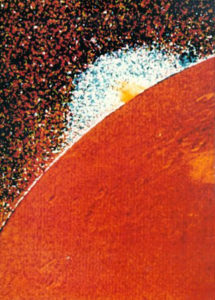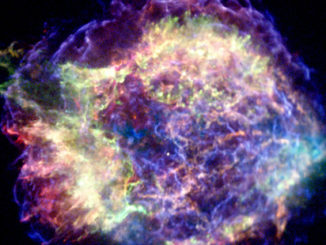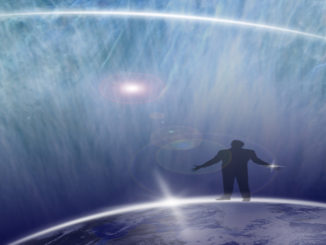Remember this Date: March 4, 1979
The Day We Discovered Life in the Universe

We know things move in the universe, but for all the pictures we’ve taken, we’ve never really seen the kind of animated movement only live action can offer. That all changed on March 4, 1979 when Voyager 1 flew past Io, Jupiter’s closest Galilean moon and one of the four Jovian satellites discovered by Galileo that have captivated our attention over the past four centuries. Of course, we might have discovered this six years earlier if not for a glitch. In December 1973, Pioneer 11 offered the first close-up glimpse of Io, revealing a rocky surface, a thin atmosphere and radiation belts. Unfortunately, according to the NASA Publication Pioneer Odyssey, of the thousands of commands sent to Pioneer 10 during the 24 days of its Jupiter encounter, only one was lost due to those radiation belts – the one including the close-up pictures of Io.
According the NASA release associated with the above image, the picture, a special color reconstruction, shows one of the erupting volcanoes on Io discovered by Voyager 1 during its encounter with Jupiter on March 4 at about 5:00 p.m. The spacecraft sat a mere 310,000 miles away as it captured the 60 mile high plume, representing the first evidence of an active extraterrestrial volcano. NASA explains the “method of color analysis allows scientists to combine data from four pictures, taken in ultraviolet, blue, green and orange light. In this picture one can see the strong change in color of the erupting plume. The region that is brighter in ultraviolet light (blue in this image) is much more extensive than the denser, bright yellow region near the center of the eruption. Scientists will use data of this type to study the amount of gas and dust in the eruption and the size of dust particles. Preliminary analysis suggests that the bright ultraviolet part of the cloud may be due to scattered light from very fine particles (the same effect which makes smoke appear bluish).”
Astronomers believe tidal heating induced as Io orbits Jupiter causes Io’s volcanic activity. Spewing sodium and sulfur into its thin air, the volcanic eruptions are even now shaping the Io’s surface. Voyagers 1 and 2 discovered seven erupting volcanoes on the moon’s dazzling red-orange surface. Unlike their Earthly counterparts, rather than expelling 2,000° F molten lava, these volcanoes eject molten sulfur at only a few hundred degrees.
Io – and its active volcanoes in particular – remains one of the biggest surprises of mankind’s initial decades of space exploration.




The Voyager was the first program I watched closely so it was very interesting to read details about Pioneer. I’d love to hear more about earlier missions since they seem to get less press.
There may never be another program as exciting as Voyager in my lifetime. Two probes and four planets. Fantastic times. I’m looking forward to seeing Messenger and New Horizons now although they won’t quite be the same.